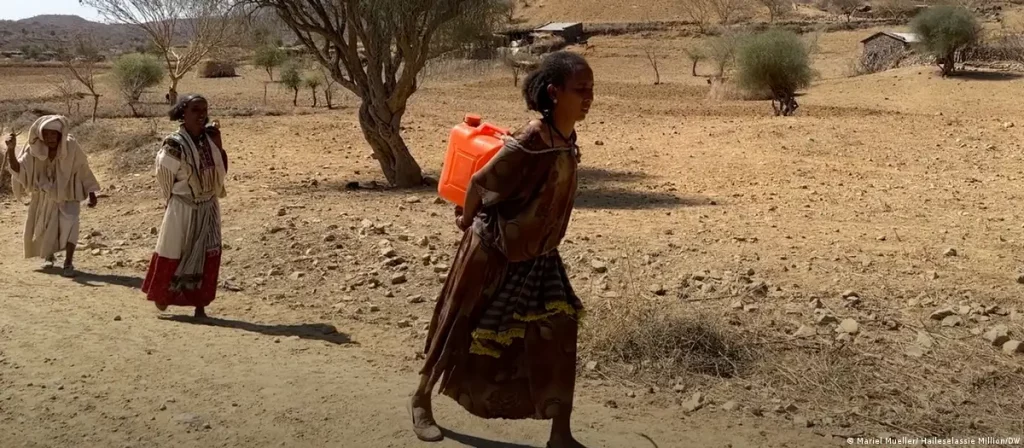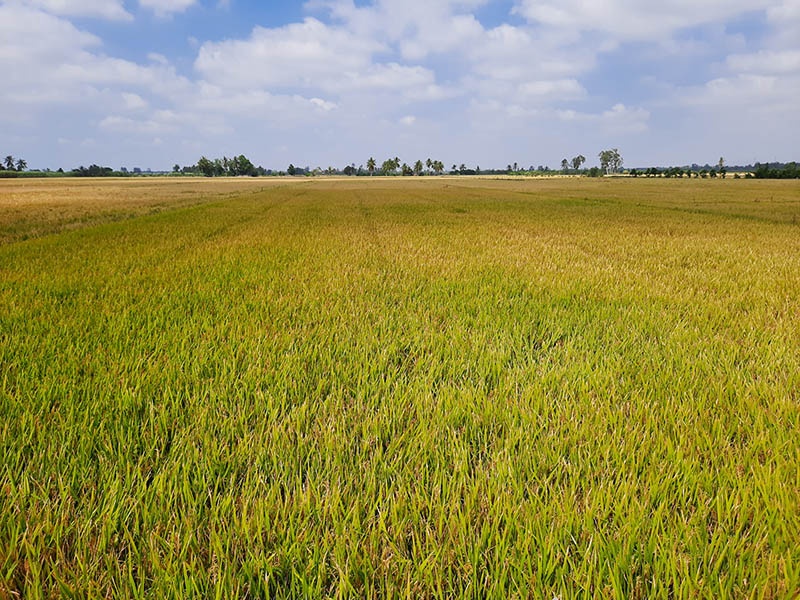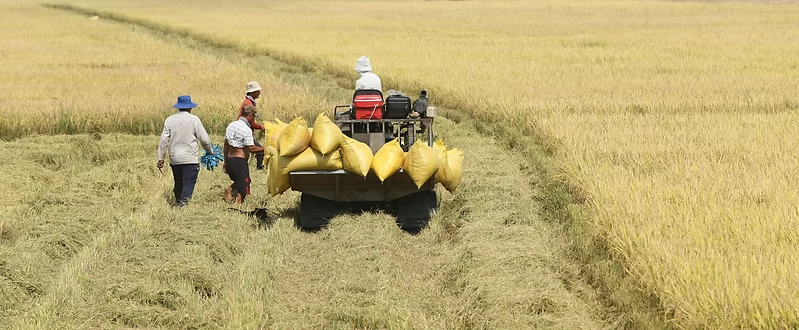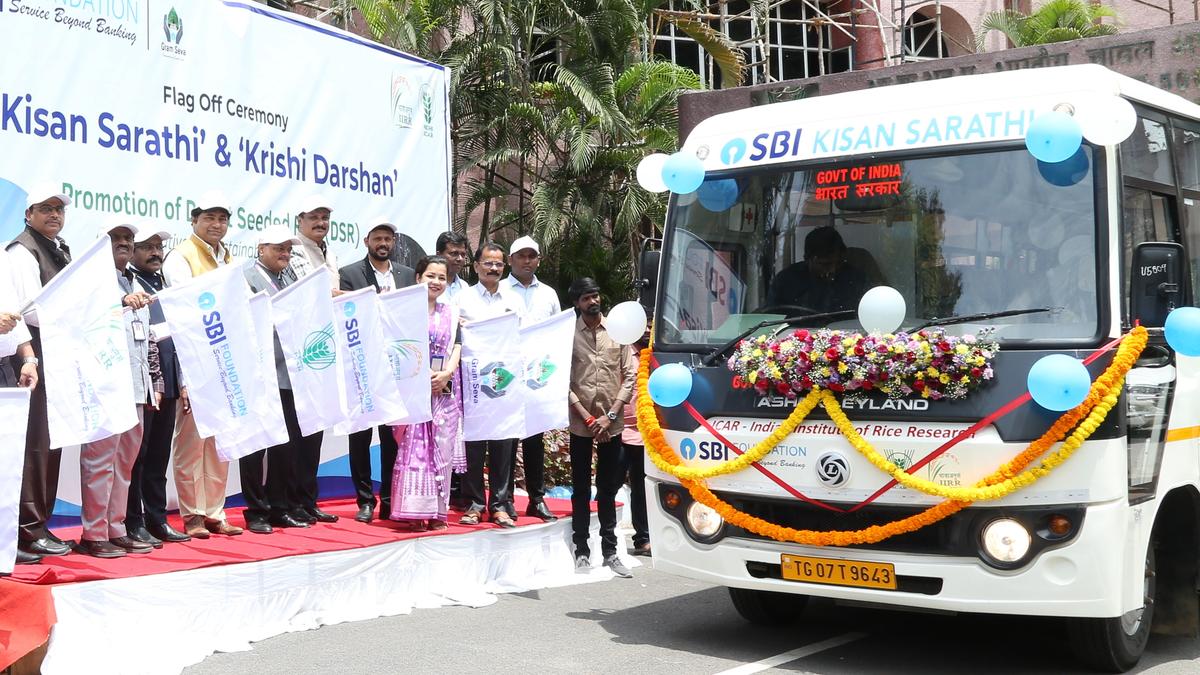Tags
How sustainable farming could help Ethiopian farmers
The reasons for Ethiopia’s food crisis are complex, but one is drought worsened by planetary heating. Some are turning towards climate-smart agriculture (CSA) as a way to alleviate the problem.

Drought is worsening food security in Ethiopia’s Tigray region
“Some days, I’m able to find something to eat. Other days, I go to bed with an empty stomach,” said Gebremedhin Hagos, an Ethiopian farmer, as he showed his meager harvest.
Hagos, like other farmers in Ethiopia, are hoping for rain amid the country’s worst drought in 40 years. Thousands of hectares of crops already lie withered in parched fields, and tens of thousands of livestock have died.
“We are starving. I’m in crisis,” the 70-year-old told DW in January. “What can we do? Where can we go?”
He and his family are among the 16 million people in Ethiopia who don’t have enough to eat. Many, including children, are suffering from malnutrition and disease after years of armed conflict, economic crises and a prolonged drought made 100 times more likely by climate change.
The northern state of Tigray, where most of the fighting took place during a two-year conflict between Tigrayan rebels and the federal government, is worst hit. UN officials are warning of an unfolding famine in the state. Hundreds have died of starvation there in the last six months.
To deal with the immediate crisis, the UN is planning to provide 3 million Ethiopians with emergency aid, mostly in Tigray. But others are looking at how to ensure people living in the Horn of Africa can feed themselves in the future as the planet heats up.
“It’s fundamental that we help to build the resilience of people in Ethiopia,” Claire Nevill, spokesperson for the UN World Food Programme (WFP) in Ethiopia, told DW. “And ensure that people have these solutions to become self-sustaining and food secure in the longer term, and that they don’t fall back into hunger.”
Going back to farming basics and getting ‘climate smart’
Abyiot Teklu, assistant professor at Addis Ababa University’s College of Development Studies, believes “climate-smart agriculture” (CSA) could help Ethiopians and other countries in the Horn of Africa secure food production in the long term. Most farmers in Ethiopia practice subsistence farming and depend on rain for watering their crops, which makes them particularly vulnerable to climate change.
CSA is essentially a new name for sustainable farming practices that have been around for a long time, and it’s the focus of Teklu’s research. It involves combining methods tailored to tackle the specific climate challenges faced by a community or region, like consecutive failed rainy seasons in the Horn of Africa.
Agroforestry is one climate-smart technique that already has a rich tradition in Southern Ethiopia and can work well in highland areas and valleys, says Teklu. It involves planting trees and shrubs among crops, often with animals such as chickens living among it all.

In contrast to monoculture crops, the method helps enrich the soil and prevent erosion. It also improves biodiversity and reduces the loss of water.
Conservation agriculture and how it can help
One study found smallholder farmers practicing agroforestry in traditional Ethiopian home gardens were helping the region to stay green, while also making money and growing nutritious sources of food for themselves.
“It’s like my savings in a bank, I can get edible items of different types whenever I need it,” one elder told the study researchers.
Conservation agriculture, which is all about protecting soil, is another CSA method. This includes small fixes like leaving the nonedible bits of crop behind on the field after harvesting, which Teklu says, restores soil quality and conserves farmland. This crop residue, as it’s called, is usually burned as fuel or fed to livestock in Ethiopia.
Within two years of implementing climate-smart agricultural techniques like crop residue management, the highland village of Debremawi had lush vegetation growing on previously damaged soil, and farmers were able to start using other CSA methods like small-scale water irrigation.
Teklu acknowledges that the current crisis is “dire” and that conflict and overlapping crises make such plans difficult to implement in the short term. But he believes there is also an opportunity to help farmers if the country takes a “long-term development approach” and explores untapped resources like groundwater reserves.
Early warning systems to help farmers
The UN WFP is also increasingly prioritizing long-term sustainable solutions to the food crisis.
It is working to provide farmers with early warning systems for climate shocks like flooding and drought so they can better plan for extreme weather and save their harvests. This is being combined with cash transfers to cushion these shocks ahead of time by spending money on extra food and livestock protection.
The WFP is also investing in projects to help former subsistence farmers in the Gambela region of Western Ethiopia produce food that can be harvested and sold to the WFP. Farmers can then buy machinery and access better seeds and fertilizer, which make for improved harvests and better ability to cope with unpredictability.
“The farmers in Gambela were able to sell back their maize to WFP, and we then could distribute it to refugees in Gambela from South Sudan,” Claire Nevill said of the organization’s project.
But with global crises competing for funding, the WFP has said finance for long-term solutions in the region are falling short, and most aid money is used to relieve immediate crises, like supporting Ethiopians with emergency food aid.

Instability hits farming hard
Though the conflict between the federal goverrnment and Tigrayan rebels officially ended in 2022, Mikiale Muruts, communication director in the Bureau of Agriculture and Natural Resource in Tigray, said “2.2 millon people are displaced and out of agricultural activities.”
Before the war, the region was a leader in sustainable approaches, even winning a UN-backed prize for efforts to combat desertification and improve people’s ability to grow food.
But now, even after a peace agreement was reached, many of the region’s fertile parts are overrun by combatants, making it impossible to farm, said Muruts. He added that the most pressing concern is resolving the security situation and feeding starving people.
“In the absence of food aid this time, our food insecurity is expected to worsen in the region,” said Muruts. “Our people are dying.”
https://www.dw.com/en/how-sustainable-farming-could-help-ethiopian-farmers-in-a-warming-world/a-68308862Published Date: February 23, 2024






